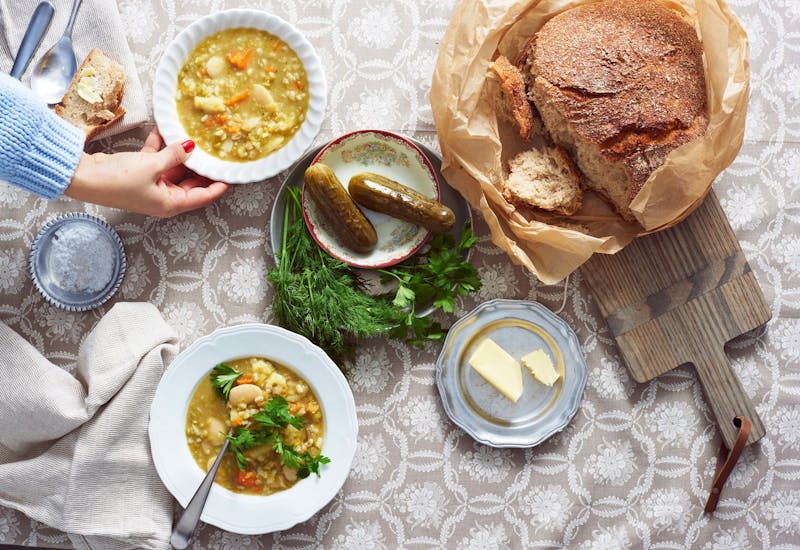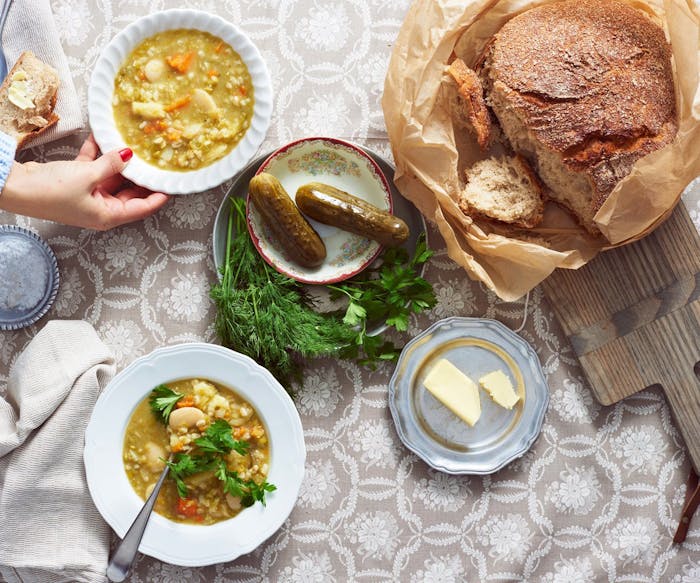When we think back to recipes that were part of our family’s fabric, that we want to remember and pass along, we often jump to dishes like latkes reserved for Hanukkah, Shabbat morning bourekas, and Persian sweets made with apples for Yom Kippur. But, for Barbara Kirshenblatt-Gimblett, a noted scholar at NYU, the dish that comes to mind is her mother’s split pea soup made with leeks, celery root, white limas, and barley. “I think it’s because it’s an everyday food, not a festival food,” that it holds such a special meaning for her, she says.
It’s a soup she was raised on in a Yiddish- and Polish-speaking home in Toronto. “I just assumed that everybody made it….It was just so much a part of our life, that no one ever thought to treat it as anything exceptional,” she says. And she never thought to make a distinction between the soup being Jewish and being Polish. But, it’s often in the daily dishes that we find the marrow of our family’s kitchens, the dishes that define our lives.
Her mother, who lived to be just shy of 99, was born Dvoyre Shushanoff in the city of Brest-Litovsk, which today sits on the Belarusian side of the border between Poland and Belarus. She immigrated to Canada in her early teens, changing her name to Doris and the less formal Dora, and with her brought the tradition of soup. A clear chicken soup graced their shabbat dinner table, and beet and cabbage renditions of borscht made their appearances as well.
But, it was the split pea soup that stuck with her daughter. Barbara never received a written recipe or formal instructions for how to make it. “For me it was completely intuitive...I never had a recipe for it, but I somehow understand it,” she says.
“For me it was completely intuitive...I never had a recipe for it, but I somehow understand it”
When Barbara moved to Poland full-time in 2007 to serve as the Chief Curator of the Core Exhibition of the excellent POLIN Museum of the History of Polish Jews, she returned the recipe to its homeland, a place where bundles of soup vegetables like celery, parsley root, carrots, and leeks, called włoszczyzna are sold, tied together, in markets. Włoszczyzna translates to “Italian stuff” Barbara explains, a reference that dates back to the 1500s when an Italian princess of Milan married a Polish king, bringing with her Italian gardeners and vegetables.
Whether in Poland or New York, where she now lives, Barbara prefers to gather her own vegetables one by one for this soup instead of buying a bundle prepared by a grocer. She swaps the onions her mother used for leeks and includes celery and/or celery root.
To her knowledge, she’s the only remaining person in her family who makes the soup. “I don’t know if I’ve ever given it to anybody,” she says of the recipe. So, she asked in her recipe that you “Remember [her] mother Dora when you serve it forth and the cold winters in Eastern Poland just after World War I.”

